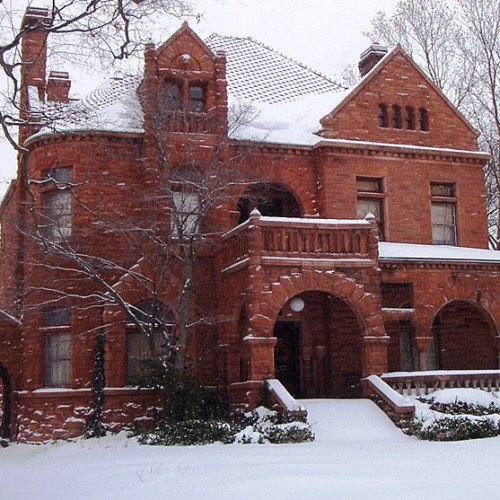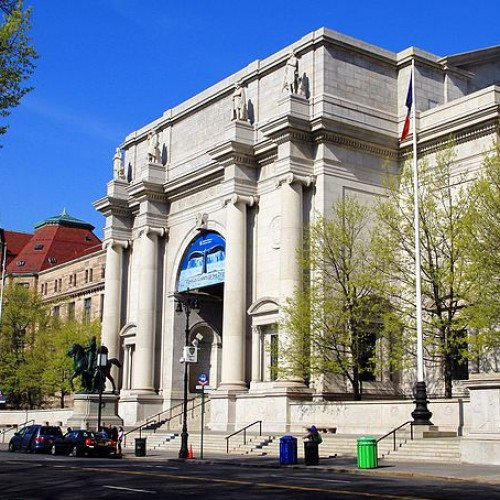Castles of "United States" ALEXANDER BROWN HOUSE vs AMERICAN MUSEUM OF NATURAL HISTORY

ALEXANDER BROWN HOUSE
The Alexander Brown House, at 726 West Onondaga Street in Syracuse, New York, is a Richardsonian Romanesque mansion in Pottsdam sandstone and Spanish tile home built in 1895. It was the home of Alexander T. Brown, inventor and co-founder of Franklin Motors and the Brown-Lipe-Chapin Company, a firm that was absorbed into General Motors. Brown was a successful inventor and manufacturer. His specialty was transmissions adapted from bike chain derailleurs, but is also known for inventing the shifting carriage that allowed typewriters to have multiple cases or fonts, patented a breech loading shotgun that became Hunter Arms and as any inventor would he added technology into the house. He added such engineering features to the house as a terra cotta shaped glass tile-covered skylight to bring natural light into the attic, a basement to attic hydraulic elevator, and a house-wide vacuum cleaning system. The 5,500 sf carriage house is known to have held up to ten cars and had a car lift installed so that the projects he was working on could be brought up and out of the cold and into his workshop where his drivers were often known to have lived and assisted. He held the largest collection of military weaponry in private hands during his day and was also known to have kept a live bear in what was once a stable for the horses who once pulled his carriages from the carriage house behind the main house on West Onondaga Street.
Statistics for this Xoptio

AMERICAN MUSEUM OF NATURAL HISTORY
The American Museum of Natural History (abbreviated as AMNH) is a natural history museum on the Upper West Side of Manhattan, New York City. In Theodore Roosevelt Park, across the street from Central Park, the museum complex comprises 26 interconnected buildings housing 45 permanent exhibition halls, in addition to a planetarium and a library. The museum collections contain over 34 million specimens of plants, animals, fossils, minerals, rocks, meteorites, human remains, and human cultural artifacts, as well as specialized collections for frozen tissue and genomic and astrophysical data, of which only a small fraction can be displayed at any given time. The museum occupies more than 2 million square feet (190,000 m2). AMNH has a full-time scientific staff of 225, sponsors over 120 special field expeditions each year, and averages about five million visits annually. The mission statement of the American Museum of Natural History is: "To discover, interpret, and disseminate—through scientific research and education—knowledge about human cultures, the natural world, and the universe." Before the construction of the present complex, the museum was housed in the Arsenal building in Central Park. Theodore Roosevelt, Sr., the father of Theodore Roosevelt, the 26th U.S. president, was one of the founders along with John David Wolfe, William T. Blodgett, Robert L. Stuart, Andrew H. Green, Robert Colgate, Morris K. Jesup, Benjamin H. Field, D. Jackson Steward, Richard M. Blatchford, J. P. Morgan, Adrian Iselin, Moses H. Grinnell, Benjamin B. Sherman, A. G. Phelps Dodge, William A. Haines, Charles A. Dana, Joseph H. Choate, Henry G. Stebbins, Henry Parish, and Howard Potter. The founding of the museum realized the dream of naturalist Dr. Albert S. Bickmore. Bickmore, a one-time student of zoologist Louis Agassiz, lobbied tirelessly for years for the establishment of a natural history museum in New York. His proposal, backed by his powerful sponsors, won the support of the Governor of New York, John Thompson Hoffman, who signed a bill officially creating the American Museum of Natural History on April 6, 1869.